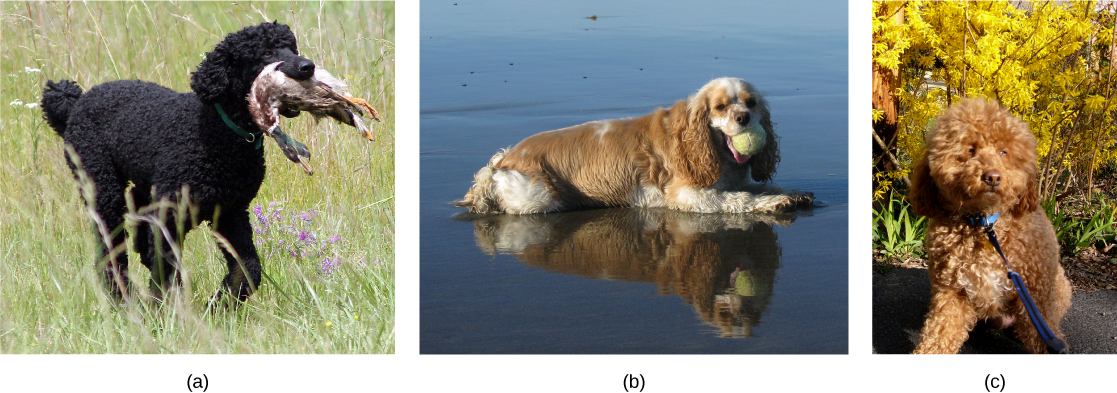| << Chapter < Page | Chapter >> Page > |
As buds give rise by growth to fresh buds, and these, if vigorous, branch out and overtop on all sides many a feebler branch, so by generation I believe it has been with the great Tree of Life, which fills with its dead and broken branches the crust of the earth, and covers the surface with its ever branching and beautiful ramifications.Charles Darwin, On the Origin of Species by Means of Natural Selection; or, The Preservation of Favoured Races in the Struggle for Life , 1859
Darwin's insight about the branching tree of life is the easiest way to think about the origin of species. The twigs at the ends of branches may be different, but they all are connected and related. Although all life on earth shares various genetic similarities, only certain organisms combine genetic information by sexual reproduction and have offspring that can then successfully reproduce. Scientists call such organisms members of the same biological species.
A species is a group of individual organisms that interbreed and produce fertile, viable offspring. According to this definition, one species is distinguished from another when, in nature, it is not possible for matings between individuals from each species to produce fertile offspring. This idea of a species is called the biological species concept and is one of the most widely accepted species concepts.
Members of the same species share both external and internal characteristics, which develop from their DNA. The closer relationship two organisms share, the more DNA they have in common, just like people and their families. Your DNA is likely to be more like your father or mother’s DNA than your cousin or grandparent’s DNA. Organisms of the same species have the highest level of DNA alignment and therefore share characteristics and behaviors that lead to successful reproduction.
Species’ appearance can be misleading in suggesting an ability or inability to mate. For example, even though domestic dogs ( Canis lupus familiaris ) display phenotypic differences, such as size, build, and coat, most dogs can interbreed and produce viable puppies that can mature and sexually reproduce ( [link] ).

In other cases, individuals may appear similar although they are not members of the same species. For example, even though bald eagles ( Haliaeetus leucocephalus ) and African fish eagles ( Haliaeetus vocifer ) are both birds and eagles, each belongs to a separate species group ( [link] ). If humans were to artificially intervene and fertilize the egg of a bald eagle with the sperm of an African fish eagle and a chick did hatch, that offspring, called a hybrid (a cross between two species), would probably be infertile—unable to successfully reproduce after it reached maturity. Different species may have different genes that are active in development; therefore, it may not be possible to develop a viable offspring with two different sets of directions. Thus, even though hybridization may take place, the two species still remain separate.

Notification Switch
Would you like to follow the 'Principles of biology' conversation and receive update notifications?